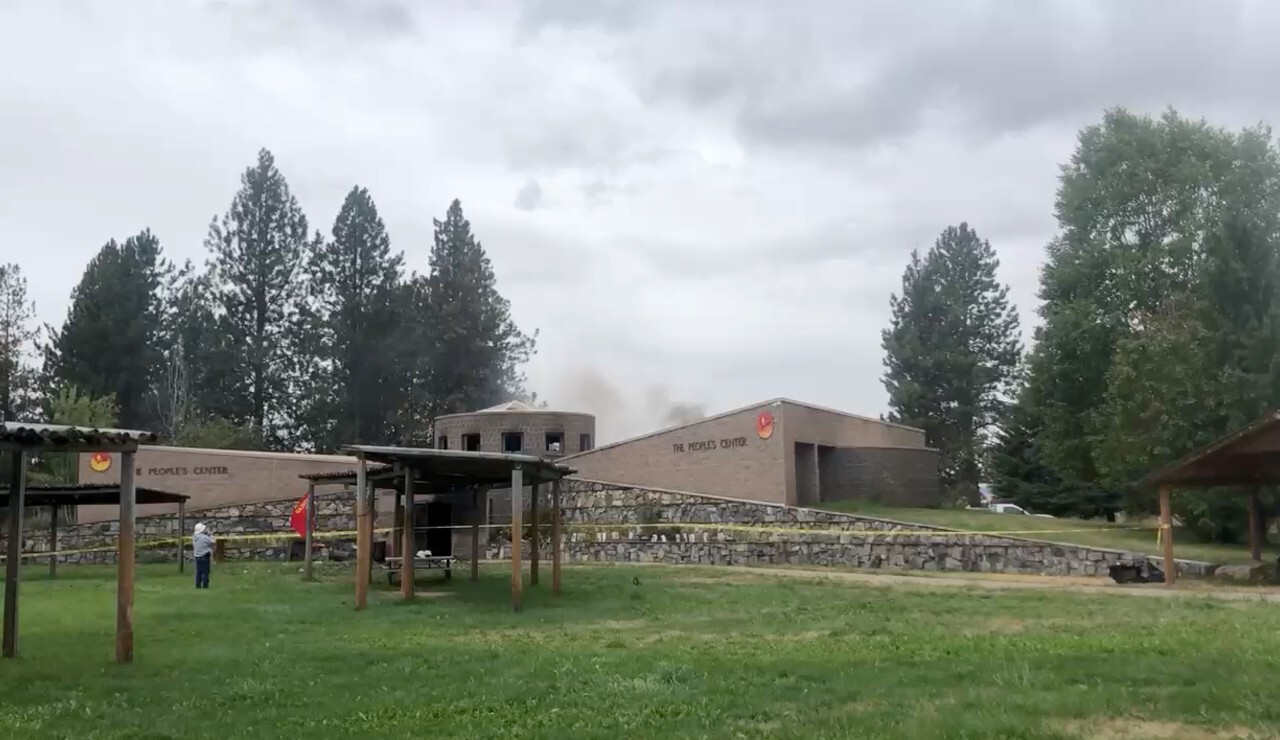ST. IGNATIUS — Since a devastating fire hit a tribal museum in Pablo more than a year ago meticulous work has been underway to save fire-damaged artifacts.
When the tragic fire ripped through the People's Center in 2020, it was devastating for the Salish Qlispe Ksanka People, with irreplaceable objects blackened and charred. But with careful, professional guidance important pieces are coming back to life, some outside the valley, some being done at the Three Chiefs Cultural Center.
A lot of that work is cleaning, starting with the simple tools first, water, even saliva.
"Just depends on what you're working on, what kind of material," explained Three Chiefs Cultural Center Staff Curator Ginger Morigeau. "If it's cloth, we're just using the soot sponges. You don't want to use too much on there. And some of the cloth is really old. You don't wanna scrape too much of the fabric off."

So I'm just kind of going through to make sure getting any excess smoke and stuff, 'cause I don't know if you can smell it, but I can still smell it when it comes down here. If it looks clean, it still needs to probably get the smoke off and the smell and the soot," Morigeau continued.
The importance of the artifacts is staggering — from clothing and personal articles that belonged to legendary chiefs and family, to gifts made to leading officials. But it's all humbling to Ginger and the others who've helped.
"I think especially a lot with the stone tools. I think about the people that used it, or you know we were like 'man, this is so heavy'. Like those women just using it back then, like how did they do it? They must have had really good upper strength," Morigeau reflects.

"I think a lot about the families that it belonged to — if it has an associated family with it. How many times it's been in their generation, how many times it's been passed down," Morigeau added. "But yeah, I think about its history where it came from, how it was made, and just how old it is. The older it is, I think it's so cool to be able to even touch it."
The hidden benefit is cataloging the collection with Morigeau saying the pile of old documents and hand-written records was overwhelming at first. But with an Excel class — and direction from lead conservator Nancy Fonicello — the database is growing.
"You know I'm able to go through and sort through things and find things. Before I had to sit there and go through the pile of records to find it," Morigeau says. "But now I can pinpoint it on the computer and show you exactly where it is. Tell you information about any object."

"And so it's nice to see how much I have accomplished with the records and that I'm almost complete with all that stuff now. I'm just kind of double-checking, triple-checking to make sure that I have complete, accurate records," she continued.
Morigeau also gives much of the credit for the progress to the many people who've provided assistance and expertise.
They include Geri Hewankorn, the curation technician who started the entire recovery, SKC Tribal Historic Preservation intern Kya-Rae Arthur, volunteer Shanley Swanson, and Sierra Ross, a Summer Archivist intern from the Montana Historical Society who've all helped with the cleaning and other work.
Whether the museum stays at its current location or moves somewhere else, the story of the fire and the amazing restoration work will be a part of that history. Morigeau says while some of the paintings, drums and other artwork are saved, other items will remain blackened, but not forgotten.

"You know some of the objects that we have that are completely burned and charred, but we still want to keep those, you know. Cause they do have a story behind them and they did belong to someone still. I think it's important to keep everything, even if it is damaged or you know that they didn't just toss everything."
Program Director Marie Torosian adds that's part of the whole effort, "everything comes with a story, connects to who made them, who wore them, who held them before, and you know now, they've got this story of how they survived the fire and came home again."
It's a home with stories, thanks to good fortune, and loving work.




